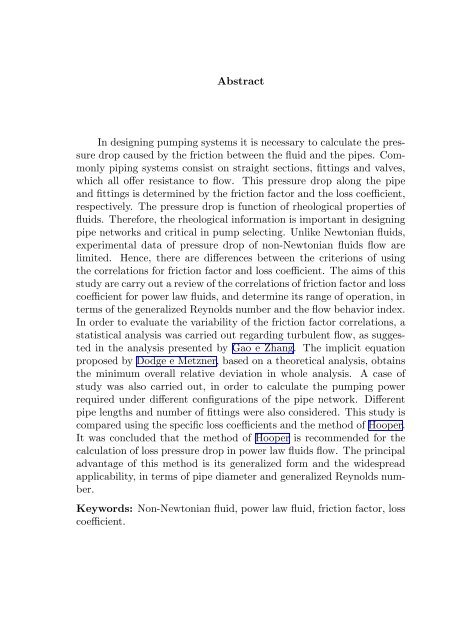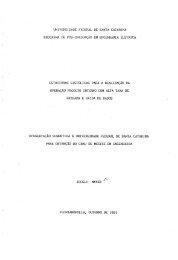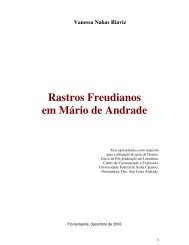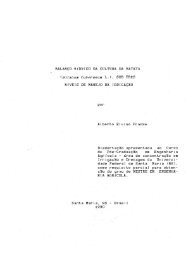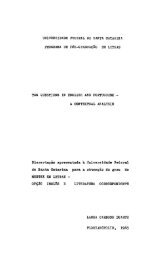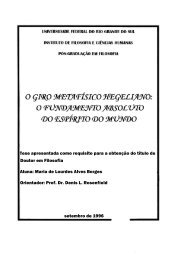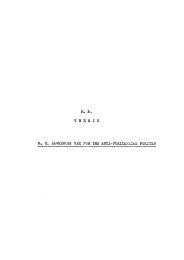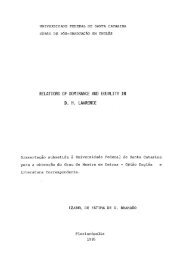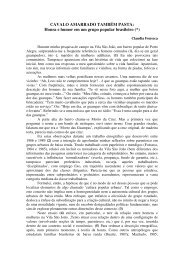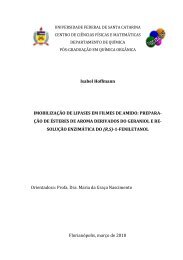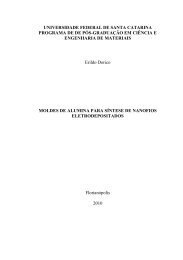Escoamento de fluídos não newtonianos
Escoamento de fluídos não newtonianos
Escoamento de fluídos não newtonianos
Create successful ePaper yourself
Turn your PDF publications into a flip-book with our unique Google optimized e-Paper software.
Abstract<br />
In <strong>de</strong>signing pumping systems it is necessary to calculate the pressure<br />
drop caused by the friction between the fluid and the pipes. Commonly<br />
piping systems consist on straight sections, fittings and valves,<br />
which all offer resistance to flow. This pressure drop along the pipe<br />
and fittings is <strong>de</strong>termined by the friction factor and the loss coefficient,<br />
respectively. The pressure drop is function of rheological properties of<br />
fluids. Therefore, the rheological information is important in <strong>de</strong>signing<br />
pipe networks and critical in pump selecting. Unlike Newtonian fluids,<br />
experimental data of pressure drop of non-Newtonian fluids flow are<br />
limited. Hence, there are differences between the criterions of using<br />
the correlations for friction factor and loss coefficient. The aims of this<br />
study are carry out a review of the correlations of friction factor and loss<br />
coefficient for power law fluids, and <strong>de</strong>termine its range of operation, in<br />
terms of the generalized Reynolds number and the flow behavior in<strong>de</strong>x.<br />
In or<strong>de</strong>r to evaluate the variability of the friction factor correlations, a<br />
statistical analysis was carried out regarding turbulent flow, as suggested<br />
in the analysis presented by Gao e Zhang. The implicit equation<br />
proposed by Dodge e Metzner, based on a theoretical analysis, obtains<br />
the minimum overall relative <strong>de</strong>viation in whole analysis. A case of<br />
study was also carried out, in or<strong>de</strong>r to calculate the pumping power<br />
required un<strong>de</strong>r different configurations of the pipe network. Different<br />
pipe lengths and number of fittings were also consi<strong>de</strong>red. This study is<br />
compared using the specific loss coefficients and the method of Hooper.<br />
It was conclu<strong>de</strong>d that the method of Hooper is recommen<strong>de</strong>d for the<br />
calculation of loss pressure drop in power law fluids flow. The principal<br />
advantage of this method is its generalized form and the wi<strong>de</strong>spread<br />
applicability, in terms of pipe diameter and generalized Reynolds number.<br />
Keywords: Non-Newtonian fluid, power law fluid, friction factor, loss<br />
coefficient.


